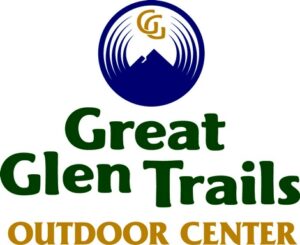(This is a companion article for “Cross Country Skiing.”)
Roger Lohr
Throughout the years, there have been some significant transformations in XC skiing to the benefit of skiers.
XC Skis: The most recent trend in XC skis is no wax skin skis, which is a return of the 1970s mohair strips embedded in the XC ski base. Most of the brands have integrated the concept with a synthetic blend of skin material strips to provide consistent grip in variable snow conditions. The advancement of “kick pockets” in ski construction has also been helpful and the combination of skins and ski construction allow a lightweight ski to work well on groomed trails or in ski tracks.
XC Ski Boots: Today’s XC ski boots are much lighter and provide more support, comfort and warmth compared to boots of olden days. The support is supplied by sole stiffness, plastic upper cuffs, and straps while the warmth is incorporated with lightweight insulation products such as Thinsulate. There are XC ski boot model versions that accommodate a women’s foot with narrower heels, rounder toe boxes, and more curvature in the upper.
Adjustable Ski Bindings: The XC ski bindings are now adjustable while out on the trail with the ability for the skier to slide the binding forward or backward to adjust weight distribution. Move the binding forward to get better grip or backward to provide more speed or better glide.
PFOA Ban: The international ski racing organization has limited or banned fluorocarbon compounds in ski wax due to health and environmental concerns. The waxes contained PFOAs or polyfluorinated materials that are linked to cancer, birth defects, hypertension and strokes in humans.
Snowmaking: There are more than 40 XC ski areas now employing snowmaking after deciding to invest in using machines to make snow. The availability of less expensive and portable snowmaking systems are main motivations to use snowmaking, but other business-driven issues are relevant too, such as filling lodge rooms, running programs, and fulfilling season pass holders’ desire to extend the ski season beyond Mother Nature’s whim.
The XC Skiing Quiver of Gear: There are distinct segments of XC skiing that take best advantage of different gear. Recreational or performance skiing on groomed trails at the XC ski area or resort allows a range of comfortable stability for those who want to avoid skiing out of control to responsive super lightweight speed sticks for the more athletic work out.
Ungroomed trails through the forest and downhill mountain slope descents call for sturdier gear such as wider skis with steel edges and heavier boots and bindings. Narrow skin skis are great for the groomed trails at the XC ski area. Before purchasing equipment, it is best to consider what type of XC skiing you might prefer, or better yet, rent different types of gear, get a tour guide or instructor, and experience the different XC ski segments over time for yourself to help make this decision.
Roger Lohr of Lebanon, NH, who owns and edits XCSkiResorts.com, has published articles and promotional topics on snow sports, sustainability, and trails in regional and national media. He is also the Recreational Editor for Green Energy Times.
Many thanks to our sponsors:











Leave a Reply